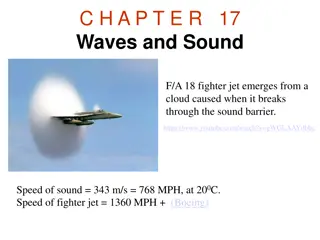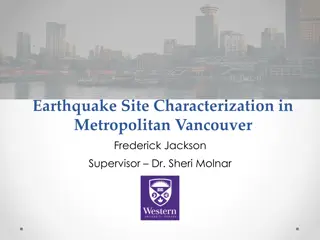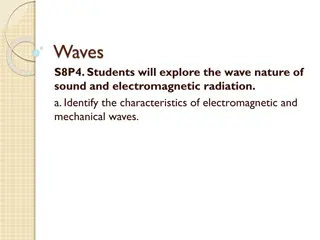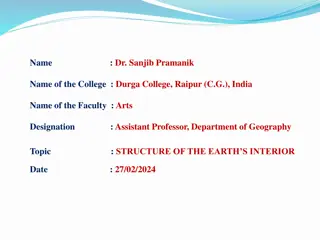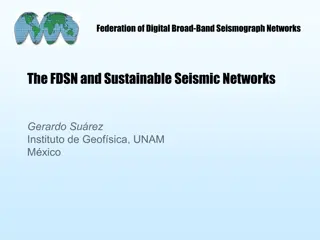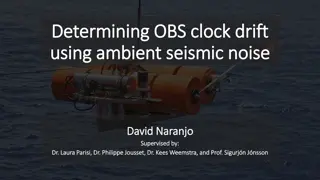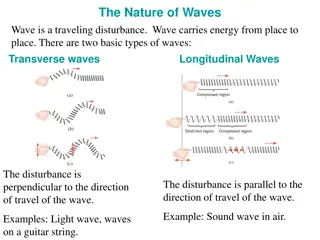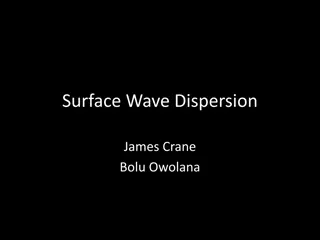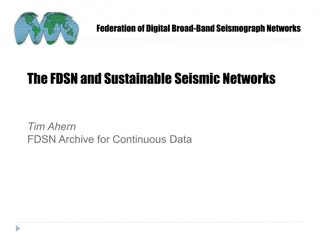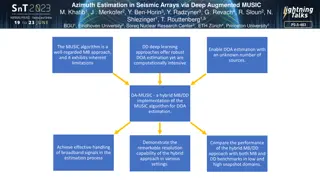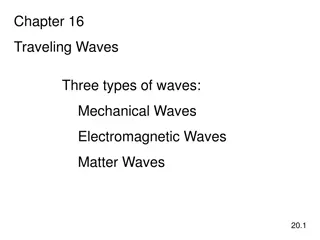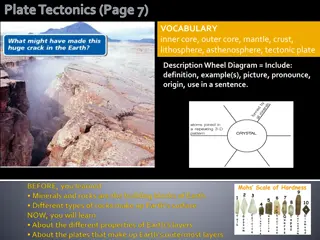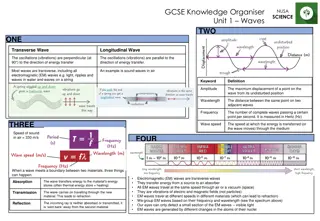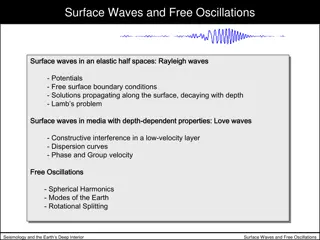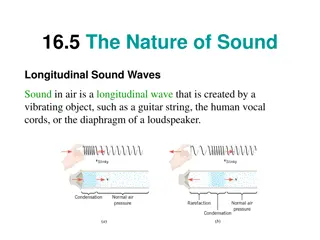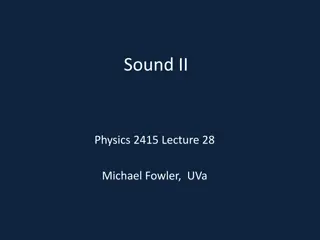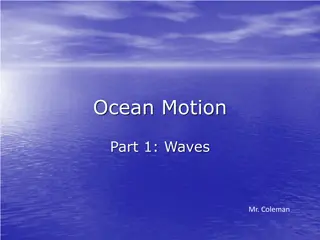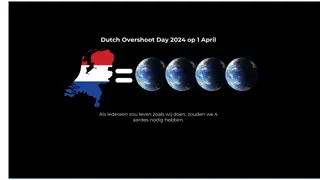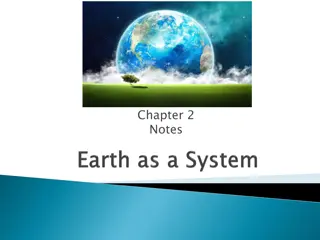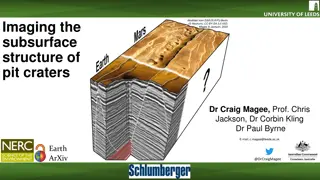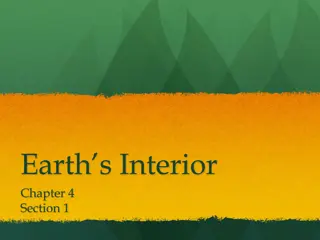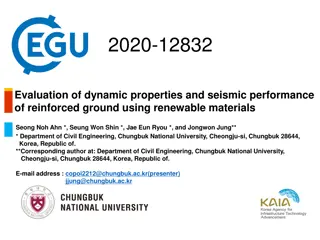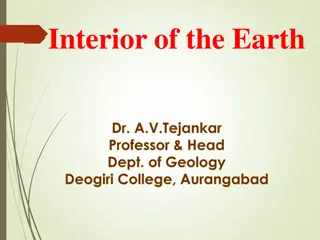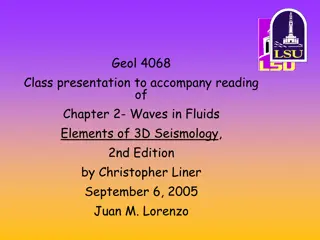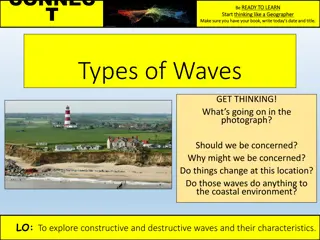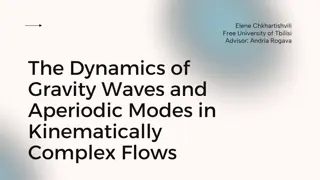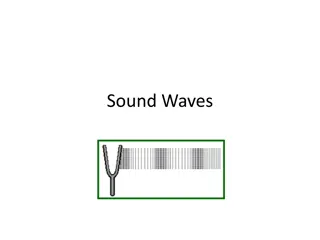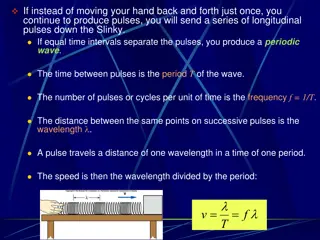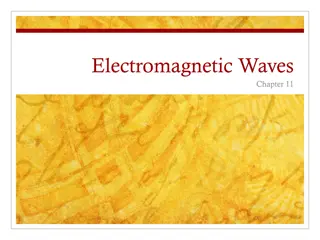Exploring Earth's Interior: Layers, Structure, and Seismic Waves
Explore the dynamic layers of Earth's interior, from its three major layers formed by gravity and chemical segregation to mineral and phase changes in the mantle. Discover how seismic waves provide insights into the planet's composition as they interact with different layers, reflecting and refracting to reveal its hidden depths.
Download Presentation

Please find below an Image/Link to download the presentation.
The content on the website is provided AS IS for your information and personal use only. It may not be sold, licensed, or shared on other websites without obtaining consent from the author. Download presentation by click this link. If you encounter any issues during the download, it is possible that the publisher has removed the file from their server.
E N D
Presentation Transcript
Earth's Interior Earth 12thedition, Chapter 12
Earths Internal Structure Earth s three major interior layers can be further subdivided into zones Gravity and chemical segregation established the three basic divisions The densest material (iron) sinks to the center The least dense material makes up the outer layers of the planets In addition, the layers have small horizontal variations in mineral composition and temperature with depth These differences indicate that the Earth s interior is very dynamic
Earths Internal Structure Mineral and Phase Changes The density of rocks increases toward the center of the planet due to gravity Upper mantle rocks have a density of 3.3 g/cm3 The same rocks in the lower mantle have a density of 5.6/cm3 The lower mantle rocks undergo a mineral phase change as the minerals are compressed under higher pressures
Probing Earths Interior Seeing Seismic Waves Most of our knowledge of Earth s interior comes from the study of earthquake waves Seismic velocities Travel times of P (compressional) and S (shear) waves through Earth vary depending on the properties of the materials Seismic waves travel fastest in stiff (rigid) rocks Seismic wave velocities also vary based on composition of the rocks
Seismic Waves Provide a Way to See into our Planet
Probing Earths Interior Seeing Seismic Waves Interactions between seismic waves and Earth s layers Seismic waves reflect and refract as they pass through the different layers of Earth Allow us to see inside the Earth P and S waves travel at different velocities which also depend on the properties of the materials that transmit them Faster through more rigid materials S-waves cannot travel through liquids
Possible Paths That Seismic Rays Follow Through Earth
Possible Paths That Seismic Rays Follow Through Earth
Possible Paths That Seismic Rays Follow Through Earth
Earths Layers Studying seismic-wave velocities gives seismologists a layer-by-layer understanding of Earth's composition When a seismic wave hits a boundary between different Earth materials some of the waves are reflected and some are refracted Velocity of seismic waves increases with depth By examining the behavior of a variety of rocks are the pressures corresponding to various depths, geologists have learned about the compositions of Earth's crust, mantle, and core
Average Velocities of P and S Waves at Each Depth
Earths Layers Earth s Crust Oceanic crust Forms at mid-ocean ridges Averages 7 km thick Composed of basalt and gabbro Average density of 3.0 g/cm3 Continental crust Heterogeneous structure and composition Averages 40 km thick Thickest (70 km) at mountains like the Himalayas Thinnest (20 km) in the Basin and Range region Average density of 2.7 g/cm3
Earths Layers Discovering the boundaries: The Moho The Moho is the boundary between the crust and the mantle Discovered in 1909 through jump in velocity of P waves below the base of the continents P wave velocities abruptly increase at the Moho Seismic waves refract as they cross the Moho
Earths Layers Earth s Mantle Over 82% of Earth's volume is in the mantle, which is the layer between the crust and the core Nearly 2900 km thick Extends from Moho to the liquid outer core Solid rocky layer composed of silicate minerals rich in iron and magnesium Determined based on observations of seismic waves
Earths Layers Earth s Mantle The upper mantle extends from the Moho to 660 km deep Composed of peridotite, an iron and magnesium rich rock composed of olivine and pyroxene The lithospheric mantle is the uppermost part of the mantle and ranges in thickness from a few km to 200 km This layer plus the crust make up the rigid lithosphere The asthenosphere is a weak layer beneath the lithospheric mantle The lower portion of the upper mantle ranges between 410 and 660 km depth, called the transition zone Due to pressure increase, olivine converts to spinel Pyroxene converts to a garnet-like structure
Earths Layers Earth s Mantle The lower mantle extends from the transition zone to the liquid core (2900 km deep) Earth's largest layer, occupying 56 percent of Earth's volume Olivine and pyroxene are converted into perovskite The D layer is the boundary between the rocky lower mantle and the liquid outer core Cool regions are thought to be the remnants of subducted lithospheric plates Hot regions are though to be the start of deep mantle plumes
Earths Layers Earth s Mantle Discovering boundaries: The core-mantle boundary Beyond 100 degrees from an epicenter, P and S waves are absent or weak Called a shadow zone S waves cannot travel through liquid P waves are considerably refracted through liquid
Earths Layers Earth s Core The outer core is liquid, based on the absence of S waves traveling through the core The outer core has a density of 9.9 g/cm3 Composed mostly of iron with some nickel 15 percent of the outer core consists of lighter elements The core (outer core and inner core) accounts for one-sixth of Earth s volume but one-third of its mass because it is so dense Outer core is 2270 km thick
Earths Layers Earth s Core The inner core is a solid, dense sphere (all other layers are shells) Has a density of 13 g/cm3 Is growing as Earth cools at the expense of the outer core Rotates faster, and moves independently of, the crust and mantle Has a radius of 1216 km The inner core-outer core boundary Some P waves are strongly refracted by a sudden increase in velocity at a boundary within Earth s core
Earths Temperature Heat flow from hotter regions to colder regions Earth s core is 5500 C Earth s surface is 15 C Heat flows from the core to the surface Rate at which Earth is cooling can be estimated by determining the rate at which heat escapes Earth s surface Heat flow is highest near mid ocean ridges Heat flow is lowest the deep abyssal plains
Earths Temperature How Did Earth Get So Hot? Earth has experienced two thermal stages First stage lasted 50 million years when temperatures increased rapidly, caused by Collision of planetesimals Decay of radioactive isotopes Asteroid collision that created the Moon Temperatures increased Second stage involves the slow cooling over the next 4.5 billion years Some heat is still generated through radioactive decay in the mantle and crust
Earths Temperature Heat Flow Heat travel through Earth by conduction, convection, and radiation Convection and conduction occur within Earth s interior Radiation transports heat away from Earth's surface to space
Dominant Types of Heat Transfer at Various Depths
Earths Temperature Convection is the transfer of heat where hot materials replace cold material (or vice versa) Primary means of heat transfer within Earth Convection cycles occur within the mantle and outer crust Mantle plumes are the upward flowing arm of the cycle Similar to a pot of boiling water Material must flow in a convection cycle Viscosity is a material's resistance to flow
Earths Temperature Conduction is the transfer of heat through a material Through the collision of atoms or through the flow of electrons Materials conduct heat at different rates Metals are better than rocks at conducting heat Diamonds are better than air at conducting heat Conduction is not an efficient way to move heat through most of Earth Most rocks are poor conductors of heat
Earths Temperature Heat flow in Earth s interior Conduction is important in the solid inner core Convection is important from the inner to the outer core Top-down, thermally driven convection Crystallization and sinking of iron to the inner core drives chemical convection Radioactive isotopes provide additional heat to drive convection
Earths Temperature Earth s Temperature Profile The profile of Earth's temperature at each depth is called the geothermal gradient Varies within Earth's interior Crust is 30 C per kilometer of depth Mantle is 0.3 C per kilometer Exception is the D layer Base of the lithosphere is roughly 1400 Base of the mantle is roughly 2500 Temperature at Earth's center is estimated to be 5500
Earths Three-Dimensional Structure Earth s Gravity Changes at the surface are due to Earth s rotation Rotation causes a centrifugal force that is proportional to the distance from the axis of rotation Earth s shape is an oblate ellipsoid (bulges at the equator), resulting in weaker gravity at the equator Other variations cannot be explained by Earth s rotation: Bodies of unusually dense rock Metals, metal ores
Earths Three-Dimensional Structure Seismic Tomography Seismic tomography involves collecting data at many different seismic stations to see parts of Earth s interior in three dimensions Three-dimensional changes in composition and density are detected with gravity measurements and can be viewed using seismology Identifies regions where P and S waves travel faster or slower than average Variations in P and S wave velocities allow scientists to image subducting plates and mantle plumes
A Seismic Tomographic Slice Showing the Structure of the Mantle
Earths Three-Dimensional Structure Earth s Magnetic Field Produced by convection of liquid iron in the outer core A geodynamo is the magnetic field caused by spiraling columns of rising electrically charged fluid in the outer core It is primarily dipolar but considerably more complex Patterns of convection change rapidly enough so that the magnetic field varies noticeably over our lifetimes
How Earths Magnetic Field Is Generated in the Liquid, Iron-Rich Outer Core
How Earths Magnetic Field Is Generated in the Liquid, Iron-Rich Outer Core
Earths Three-Dimensional Structure Earth s Magnetic Field Measuring Earth s magnetic field and its changes The magnetic field is measured by declination and inclination Declination measures the direction of magnetic north pole with respect to the geographic north pole Inclination measures the downward tilt of the magnetic lines The locations of magnetic poles change significantly over time
Inclination (or Dip) of the Magnetic Field at Different Locations
Inclination (or Dip) of the Magnetic Field at Different Locations
Earths Three-Dimensional Structure Magnetic Field Magnetic reversals The magnetic field randomly reverses and north and south poles swap direction Reversal takes only a few thousand years, but during that time, the magnetic field, which protects Earth from solar wind, significantly decreases to about 10% of normal Evidence that convection patterns in the outer core change over relatively short time spans The discovery of reversals has been extremely important to the foundation of the theory of plate tectonics
Earths Three-Dimensional Structure Magnetic Field Global dynamic connections: Earth s layers are connected by their thermally driven motions Example: The break-up of Pangaea Break-up of Pangaea led to an increase in subduction of sea-floor, leading to an increase in cold, suducted slabs at the core-mantle boundary Cold slabs displaced hot rocks at the core mantle boundary causing an increase in mantle plume activity Cold slabs disrupted outer core convection and magnetic reversal activity
End of Chapter 12 End of Chapter 12



